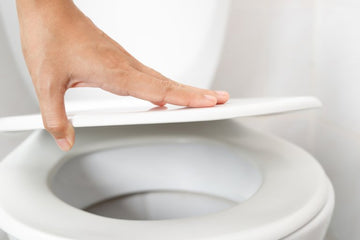In today's world, where sustainability is becoming a core focus for industries and individuals alike, understanding the environmental impact of bathroom water use is crucial. The bathroom is one of the most water-intensive spaces in our homes and workplaces. With every flush, shower, and faucet use, we contribute to a larger environmental footprint that has far-reaching consequences. This article explores the various aspects of bathroom water use and its impact on the environment, offering insights and solutions for industry QA professionals to consider.

Understanding Water Usage in Bathrooms
Bathrooms are often overlooked when considering water consumption. However, they account for a significant portion of water use in residential and commercial buildings. According to the Environmental Protection Agency (EPA), the average family can waste 180 gallons per week, or 9,400 gallons of water annually, due to leaks alone. This staggering amount of water waste emphasizes the need for better water management practices.
Showering, flushing toilets, and running faucets are the primary contributors to bathroom water use. Traditional toilets, for instance, use around 3.5 to 7 gallons per flush. In contrast, dual-flush toilets, a more sustainable alternative, can reduce this to as little as 1.28 gallons per flush, significantly lowering water usage.
The Environmental Consequences
The environmental impact of excessive bathroom water use is multifaceted. First, it leads to increased energy consumption, as water treatment and heating require substantial amounts of energy. Second, excessive water use contributes to the depletion of vital freshwater resources, which are already under stress due to climate change and population growth.
Moreover, the increased demand for water leads to higher greenhouse gas emissions, as the energy used in water treatment processes often comes from fossil fuels. By reducing bathroom water usage, we can mitigate these impacts and work towards a more sustainable future.
Solutions for Reducing Water Use
For industry QA professionals and homeowners alike, adopting water-efficient fixtures and practices is key to reducing bathroom water usage. Here are some solutions to consider:
- Install Water-Saving Fixtures: Consider upgrading to WaterSense labeled toilets and faucets. These fixtures are designed to use significantly less water without compromising performance.
- Promote Water-Saving Habits: Educate building occupants about the importance of water conservation. Simple actions like turning off the tap while brushing teeth or taking shorter showers can make a big difference. For more tips, visit this guide.
- Fix Leaks Promptly: Regular maintenance and timely repairs can prevent water waste caused by leaks.
- Consider Retrofitting: Retrofitting existing toilets with dual-flush mechanisms can be a cost-effective way to reduce water use without replacing the entire fixture. Learn more about this process here.
Industry Implications
For industry QA professionals, understanding the implications of bathroom water use is essential. Implementing water-saving technologies can lead to significant cost savings and contribute to achieving sustainability goals. Furthermore, adopting these practices can enhance a company's reputation by demonstrating a commitment to environmental stewardship.
By integrating water-efficient solutions into building designs and operations, industries can play a pivotal role in reducing the overall environmental impact of bathroom water use. For example, incorporating eco-friendly bathroom upgrades can not only save water but also attract environmentally conscious consumers.
The Future of Water Conservation
Looking forward, the importance of water conservation in bathrooms will continue to grow. Advances in technology and increased awareness of environmental issues are driving the development of innovative solutions that can further reduce water consumption.
Smart water management systems, for example, can monitor and optimize water use in real-time, providing valuable data for further improvements. As these technologies become more accessible, they will become integral to efforts aimed at minimizing the environmental impact of bathroom water use.

Conclusion
The environmental impact of bathroom water use is significant, but it is not insurmountable. By adopting water-efficient technologies and practices, industry QA professionals can lead the way in reducing water waste and promoting sustainability. As we strive for a more sustainable future, every drop saved counts.
FAQs
Q1: What are the main contributors to bathroom water use?
A1: The main contributors to bathroom water use are showers, toilets, and faucets. Traditional toilets and long showers are particularly water-intensive.
Q2: How can industries reduce bathroom water use?
A2: Industries can invest in water-efficient fixtures, promote water-saving habits, and implement smart water management systems to reduce bathroom water use.
Q3: Why is reducing bathroom water use important?
A3: Reducing bathroom water use is crucial for conserving freshwater resources, reducing energy consumption, and lowering greenhouse gas emissions.






